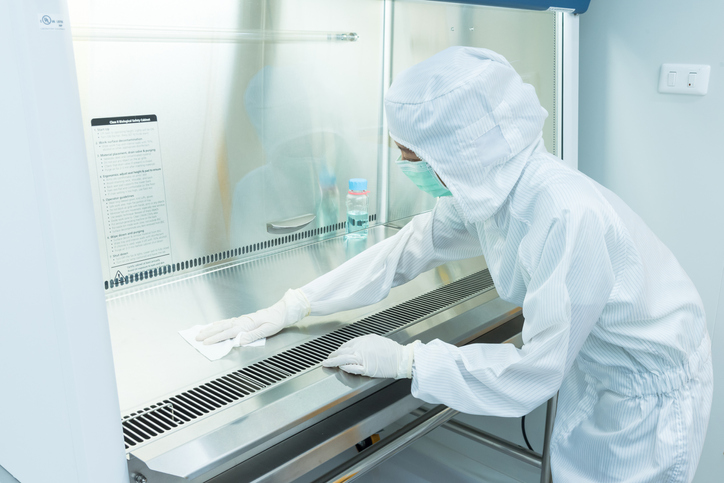When it comes to managing and maintaining the integrity of a laboratory, compliance in all aspects of decontamination can be daunting. Not only is regulatory compliance a must, but proper decontamination practices are also necessary to assure accurate lab work, repeatable and reportable results, and the safety of personnel who enter the facility.
Decontamination is daunting because of the underlying risks and liabilities, as well as the careful processes that must be followed. Proper decontamination entails much more than a thorough cleaning — although that is a key component.
In this piece, we will examine common decontamination scenarios, liabilities, and challenges, along with the process itself.
When Should Decontamination Occur?
- Moving to a new lab: When entering a new lab, your organization should decontaminate it before beginning operations, even if the previous occupant already did so. This is assures that your own standards have been met and that the risks of contamination have been suitably attenuated.
- Decommissioning a lab: When you vacate a lab, the building owner will often require you to carry out a decommissioning process, which is an intensive cleaning that meets the owner’s standards.
- Before renovations: Renovations and maintenance require outside personnel to work in the lab facility, and they may not be able to wear appropriate protective equipment. For this reason, it is important to carry out a decontamination process before renovations or maintenance occur.
- After an accident: An incident such as a broken sample container is almost always synonymous with contamination. Decontamination must thus occur after any accident to make certain that proper cleanup procedures have been followed.
- During holidays, downtime or breaks: Since decontamination requires a suspension of work and a shutdown of equipment, periods of extended downtime — such as holidays or school breaks — are ideal for scheduled cleaning.
The Liabilities of Lab Occupancy
The above scenarios touch on some of the primary challenges of lab occupancy. In this section, we will look at the decontamination-centered liabilities you may face in the course of occupying a lab, from move-in to decommissioning.
- Worker and contractor safety: The paramount concern in decontamination is assurance that all occupants of the facility — staff and outside contractors alike — are safe from the contamination risks posed by laboratory work.
- Insufficient processes by the previous occupant: As mentioned above, it is impossible to be 100% sure that the previous occupants decontaminated the lab upon vacating it, or that they followed rigorous procedures during their occupancy. Other process failures — such as lack of documentation or record-keeping — are also liabilities that you may encounter.
- Regulatory compliance: Laboratory work and decontamination requirements are often regulated by governing bodies. It is critical to document procedures along with all other aspects of lab work in order to be confident that you can pass an audit.
- Lease/rental obligations: Facility owners often have strict obligations in place to assure the safety and integrity of the facility. You must closely follow these stipulations and document processes in order to avoid any claims.
- Process adherence by personnel: From daily staff to housekeeping personnel, proper decontamination procedures must be followed at every level in order to minimize risks.
Step by Step: The Decontamination Process
- Understand the space: Learn what chemicals, materials, and other potential contaminants may be present in the lab. Ideally, you can ascertain these details through documentation, though it might be necessary to contact previous occupants or the building owner.
- Conduct tests: Once you know what materials may be present in the space, you can perform the right tests to determine what is actually there.
- Assess the need: The test results will reveal the decontamination need: which materials need to be removed or neutralized; which surfaces, items and areas must be cleaned; and which supplies are necessary for these tasks.
- Create a plan: Take a big-picture view of the processes required, and determine how to carry them out most efficiently and effectively. Consider timing, material interaction, logistics and potential for cross- or re-contamination.
- Clean and decontaminate: Remove or dispose of any items and materials that can be safely taken out of the space, and conduct the proper deep-cleaning, neutralizing, and decontamination procedures in every area that needs them.
With this understanding of the decontamination scenarios and challenges present during lab occupancy, you can be well-prepared to keep workers safe while protecting the integrity of your facility, results, and reputation.
Contributing Author: Steve Gonzales, Vice President, Technical Safety Services
Steve Gonzales is Vice President of Technical Safety Services, which provides testing, certification, and calibration of equipment and controlled environment crucial to the success of the biopharma, medical device, academic research, and food production industries.
